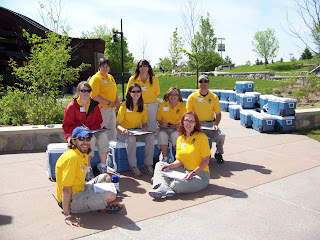
Snaking Across State Lines
Snakes Alive at the Kansas City Zoo is opening Thursday, April 1. Public is welcome to the ribbon cutting at 10 a.m.
In creating our Myth-buster graphics in Snakes Alive we searched for these best snake images to use. Robert Makowsky was kind enough to let us use his image of the Amazon Tree Boa. This specimen was caught in Peru in the limbs over a small tributary of the Amazon. After the snake was photographed it was immediately released in it original location.
Robert Makowsky is with the Department of Biostatistics at University of Alabama at Birmingham. Thank you Robert!
Slither, slide, walk or run to the Kansas City Zoo to busta-myth about these glistening ornate patterned creatures. Did you know snakes don’t have eyelids or ears and their “noses” are also found on the roof of their mouths? Starting April 1 – you can find out this and more at Snakes Alive.



